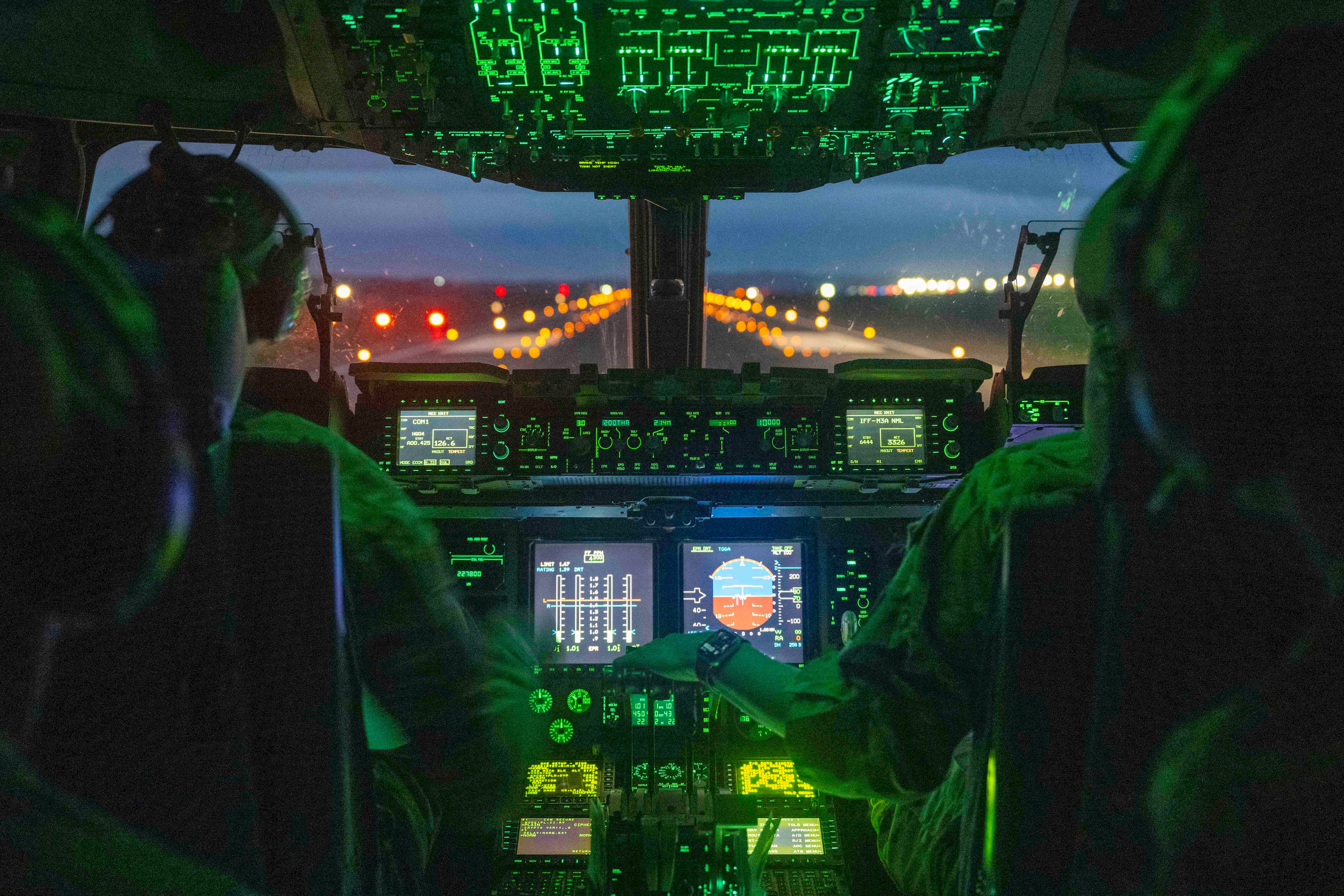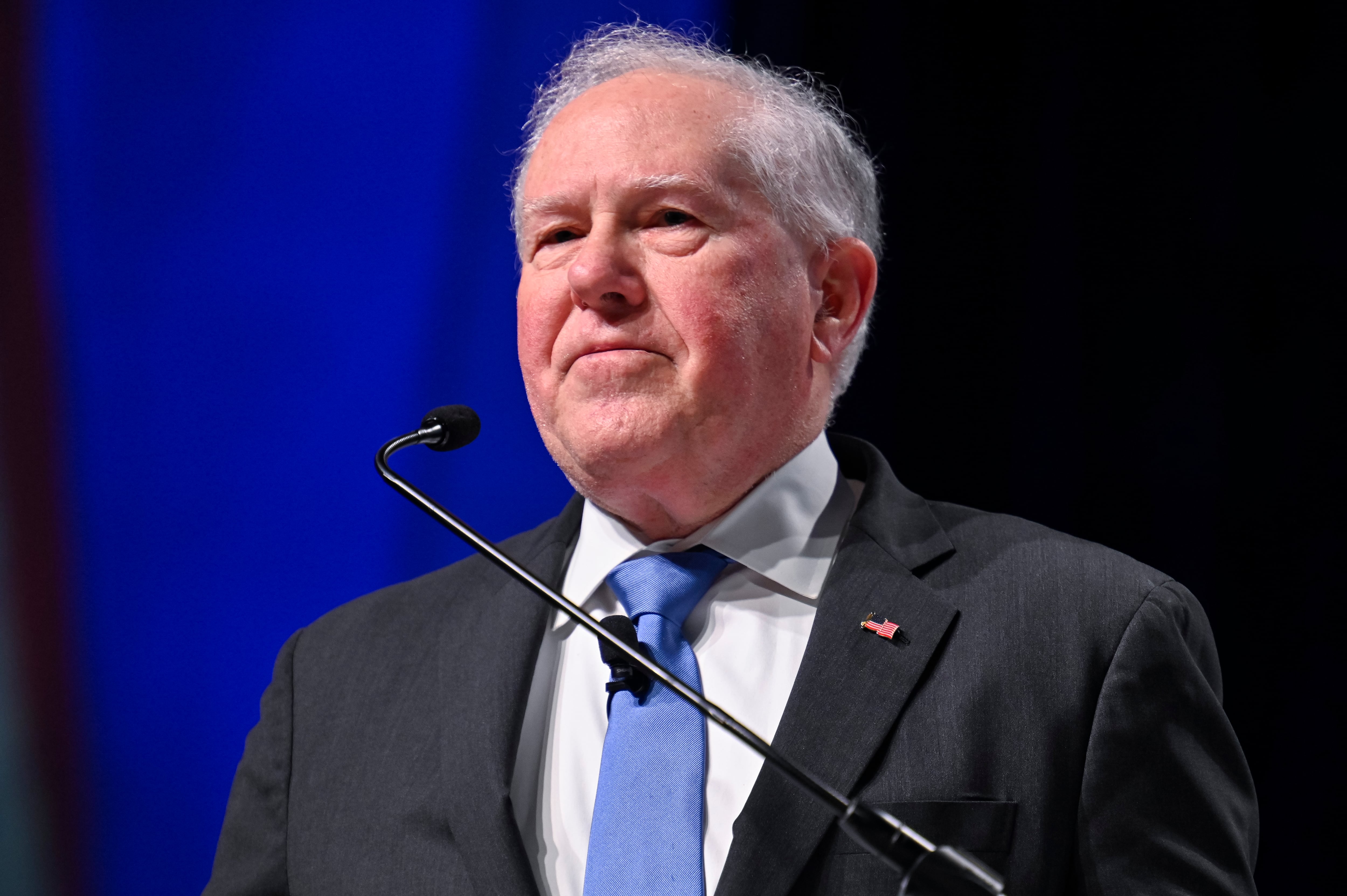This story was updated March 11 at 10:18 p.m. with additional information on sustainment funding and the Space Force.
The Department of the Air Force is asking for $217.5 billion in its fiscal year 2025 budget request, released Monday, in an effort to largely maintain the department’s status quo as its services juggle a manpower crunch and a surge in operational requirements.
The Air Force accounts for $188.1 billion of that pie — a 1.6% increase above the service’s request for fiscal year 2024, which Congress has not yet enacted. The Space Force hopes to receive $29.4 billion next fiscal year, a 2% dip below its previous request.
RELATED

Air Force Secretary Frank Kendall told reporters Friday that the budget request largely “goes to taking care of the current force,” including an “acceptable” level of spending on troop and civilian pay and readiness.
The Air Force wants $75.6 billion for operations and maintenance in its base budget next year, up from the $73.5 billion it sought in fiscal year 2024, plus another $5.9 billion to directly fund deployed operations. It’s also seeking $41.7 billion for personnel costs for fiscal 2025, an increase from $40.9 billion in the current year.
The new ask would also fund a spike in the service’s modernization efforts, including a nearly $1 billion boost to pursue more advanced fighters and drone wingmen.
“My priority is to get to a next generation of capabilities as quickly as we can because of what China is doing in terms of their modernization,” Kendall said.
One of Kendall’s biggest initiatives, a sweeping set of plans to better prepare the Air Force to outpace China’s military ambitions, is not expected to significantly impact costs, he said.
“What we’re talking about with the reoptimization is creating some new organizations, but they will be created out of pieces that we already have,” Kendall said. “We’re not talking about big manpower increases, and we’re going to minimize, the extent we can, the movement of people, … the acquisition of real estate, and so on.”
The service may incur some costs associated with reconfiguring how it deploys, as it launches experimental air task forces this summer to develop deployable “units of action,” or combat wings that can deploy on a predictable schedule while leaving enough assets and personnel at home to avoid hamstringing their home base.
“We’re going to take a hard look at what we have in our units to ensure we have everything we actually need to go fight,” Kendall said. “I expect we’re going to find some shortfalls when we do that.”
For the time being, the department’s military workforce aims to largely plateau at its current level. The Department of the Air Force wants 504,500 enlisted and officer jobs across the active duty Air Force and Space Force, Air National Guard and Air Force Reserve next year, down from the 512,100 personnel that leaders sought for 2024.
The newest request nearly matches end-strength numbers authorized by Congress in the 2024 National Defense Authorization Act.
The active duty Air Force would account for 320,000 of those jobs, down from the 324,700 it sought in fiscal 2024. Congress opted to cut the total number of active duty Air Force billets to 320,000 for 2024, saying the service’s lackluster recruiting didn’t warrant additional jobs.
RELATED

The Air Force also seeks a total force of 107,700 jobs for the Air National Guard, slightly fewer than the 108,400 billets it wanted last year, but a boost over the 105,000 currently authorized by Congress. The Reserve would add 100 billets. The Space Force, the smallest of the military branches, would add 400 billets for 9,800 uniformed jobs in total.
The Air Force narrowly hit its active duty recruiting goal in 2022 before falling about 10% short in 2023. The fiscal 2025 budget ask will offer funds for “the number of airmen we realistically believe we can bring into the Air Force this year,” spokesperson Ann Stefanek said.
That could mean reassessing how many airmen the Air Force wants in each of its career fields for the year ahead. Air Force spokesperson Maj. Annabel Monroe told Air Force Times that the service is currently considering those impacts.
This is the first year that the 4-year-old Space Force won’t absorb missions from the other services, the Air Force’s uniformed budget chief Maj. Gen. Michael Greiner told reporters Monday. The service finished taking over the last of those missions — the Army’s Joint Tactical Ground Station missile-warning program, which includes four ground systems overseas that gather and disseminate data from overhead sensors — in October. That mission now falls under Space Force Delta 4 at Buckley Space Force Base, Colorado.
“We think the growth of 400 [guardians] keeps us lean, keeps us agile, but also allows us the right number there to get after the mission set,” Greiner said.
If enacted by Congress, airmen and guardians would see a 4.5% pay raise, a 4.2% increase in their housing allowance and a 4.5% subsistence allowance raise. It also includes $1.1 billion in bonuses and retention pay for 118,000 critical positions, including $327 million for aviation jobs and $21 million to retain cyber specialists.
The Air Force also plans to spend $9.2 billion, up from a projected $9 billion last year, to fund 1.1 million flying hours across the force. The slight uptick in flight time — about 37,000 hours over the 2024 request — comes amid a spike in operational requirements due to wars in Europe and the Middle East, as well as the Air Force’s struggle to fully staff its pilot corps.
Kendall said he has promised aviators that he would not cut flying hours.
“There was increasing risk if we did that,” he said.
That comes as the service tries to strike the right balance between sustaining its aging fleet and bringing new equipment online. The Air Force’s $18.8 billion funding request for weapon system sustainment would cover 87% of its maintenance needs in fiscal year 2025, according to the service’s budget documents.
The Air Force needs an additional $1 billion for weapons systems sustainment and flying hours to keep pace with fiscal year 2024, said Kristyn Jones, who is performing the duties of the Air Force undersecretary and also serves as its civilian budget chief. And the Air Force is already trying to gird against steep declines in the sustainment budget in the five years ahead.
“That’s something that we’re looking at as we’re planning for [fiscal] ‘26,” Jones said. “How can we ramp back our readiness without too negatively impacting the modernization programs that we have?”
The service expects to shrink its inventory from 5,032 aircraft to 4,903 by the end of September 2025 as it pursues plans to strike outdated platforms — including its A-10 Thunderbolt II attack plane, KC-135 Stratotanker aerial refuelers and more — from its rolls while bringing on airframes like the F-15EX Eagle II fighter, B-21 Raider bomber and the T-7A Red Hawk trainer jet. The Air Force hopes to spend $233 million to begin buying training-ready T-7s, which will replace the T-38 Talon jet, in fiscal 2025.
As the active duty Air Force looks to curb its perennial pilot shortage, Kendall on Friday said keeping the six-decade-old T-38s flying is one of the biggest impediments to fixing the aviator pipeline.
“We’re waiting for the T-7 to come online to replace it,” he said.
Courtney Mabeus-Brown is the senior reporter at Air Force Times. She is an award-winning journalist who previously covered the military for Navy Times and The Virginian-Pilot in Norfolk, Va., where she first set foot on an aircraft carrier. Her work has also appeared in The New York Times, The Washington Post, Foreign Policy and more.





